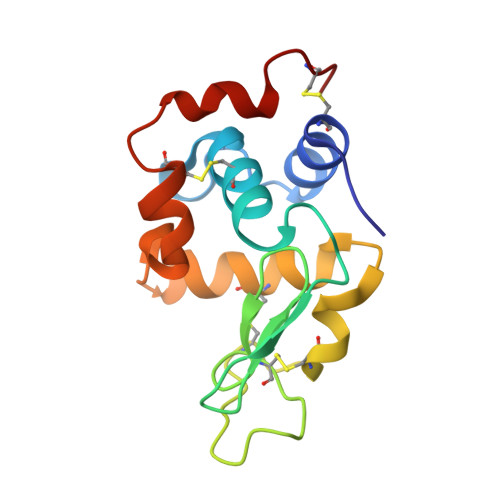Identification of a universal VHH framework to graft non-canonical antigen-binding loops of camel single-domain antibodies
Saerens, D., Pellis, M., Loris, R., Pardon, E., Dumoulin, M., Matagne, A., Wyns, L., Muyldermans, S., Conrath, K.(2005) J Mol Biol 352: 597-607
- PubMed: 16095608
- DOI: https://doi.org/10.1016/j.jmb.2005.07.038
- Primary Citation of Related Structures:
1ZMY - PubMed Abstract:
Camel single-domain antibody fragments (VHHs) are promising tools in numerous biotechnological and medical applications. However, some conditions under which antibodies are used are so demanding that they can be met by only the most robust VHHs. A universal framework offering the required properties for use in various applications (e.g. as intrabody, as probe in biosensors or on micro-arrays) is highly valuable and might be further implemented when employment of VHHs in human therapy is envisaged. We identified the VHH framework of cAbBCII10 as a potential candidate, useful for the exchange of antigen specificities by complementarity determining region (CDR) grafting. Due to the large number of CDR-H loop structures present on VHHs, this grafting technique was expected to be rather unpredictable. Nonetheless, the plasticity of the cAbBCII10 framework allows successful transfer of antigen specificity from donor VHHs onto its scaffold. The cAbBCII10 was chosen essentially for its high level of stability (47 kJmol(-1)), good expression level (5 mgl(-1) in E.coli) and its ability to be functional in the absence of the conserved disulfide bond. All five chimeras generated by grafting CDR-Hs, from donor VHHs belonging to subfamily 2 that encompass 75% of all antigen-specific VHHs, on the framework of cAbBCII10 were functional and generally had an increased thermodynamic stability. The grafting of CDR-H loops from VHHs belonging to other subfamilies resulted in chimeras of reduced antigen-binding capacity.
Organizational Affiliation:
Laboratorium voor Cellulaire en Moleculaire Immunologie, Vrije Universiteit Brussel, Pleinlaan 2, B-1050 Brussel, Belgium.















